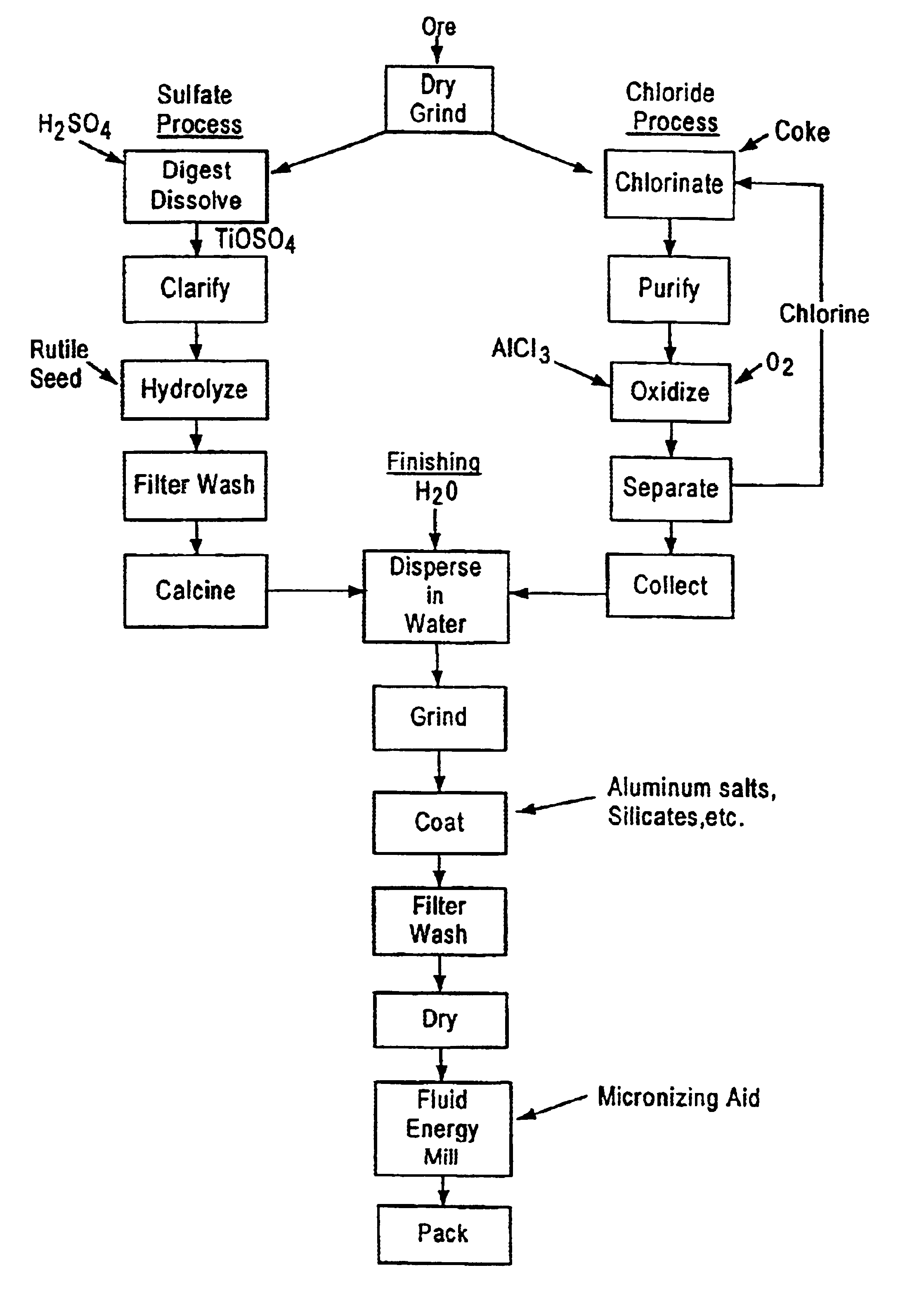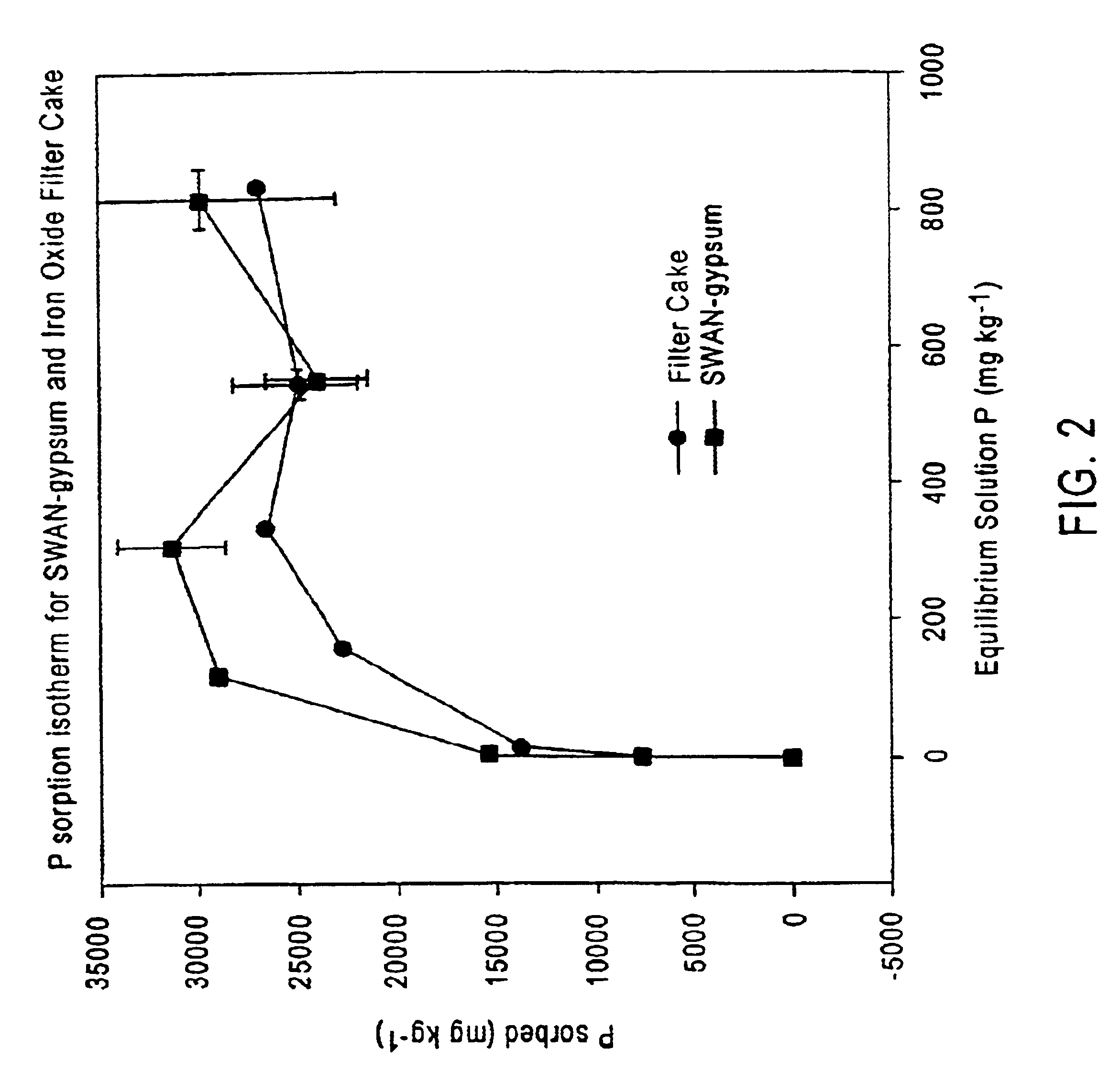Phosporous removal from animal waste
a technology of animal waste and phosporous, which is applied in the direction of calcareous fertilisers, other chemical processes, separation processes, etc., can solve the problems of increasing the percentage of total phosphorus in runoff that is immediately available, moving through the soil-water system, and being vulnerable to leaching into the groundwater, so as to control the growth of any organism
- Summary
- Abstract
- Description
- Claims
- Application Information
AI Technical Summary
Benefits of technology
Problems solved by technology
Method used
Image
Examples
example 1
SWAN or FC Adsorption Isotherms
[0072]In soils, the primary soluble phosphorus retention mechanisms are soil adsorption and mineral precipitation. Because it is often difficult to discern which process is occurring in soils, the term “sorption”, which includes adsorption and precipitation, is used. Adsorption of phosphorus occurs via ligand exchange on surfaces of clay particles, organic peat, and calcium, ferric and aluminum oxides and hydroxides. This occurs when oxygen or hydroxyl (OH−) ions are replaced by the phosphate anion (PO4−). Under certain conditions, precipitation of phosphorus can occur with iron, aluminum and calcium cations. As sorption sites and cations capable of precipitating soluble phosphorus are finite, continual, long-term application of animal waste results in the accumulation of phosphorus in surface soils and subsequent increase in phosphorus loss via runoff and erosion.
[0073]The nature of the phosphorus precipitate compounds formed depends on pH and relativ...
example 2
SWAN or FC in Treatment of Liquid Wastewater
[0076]Determination of appropriate SWAN or FC application rate is based on phosphorus content of the wastewater and the phosphorus removal rate of SWAN or FC for that particular wastewater. Nutrient analysis is used to determine the phosphorus content of wastewater. Laboratory bench top experiments are used to establish the required concentration of the amendment per volume of wastewater. Laboratory bench top experiments would also establish contact time necessary for phosphorus removal to occur.
example 3
Suitability of SWAN-gypsum and Filter Cake as Soil Amendments
[0077]The potential for trace metal contamination from SWAN-gypsum, filter cake and poultry litter was evaluated using the Resource Conservation and Recovery Act (RCRA) Toxicity Characteristic Leaching Procedure (TCLP, SW-846 Method 1311). Samples were prepared using a leaching fluid of pH 4.93±0.05, which approximates the lowest acidity expected in Maryland agricultural soils. Final pH of the solution extracts was approximately 7. Analysis was performed using Inductively Coupled Plasma Emission Spectrometry (ICPES) and Cold Vapor Atomic Absorption Spectrometry (CVAAS) in accordance with SW-846 Methods 6010B and 7470A respectively. Table 1 shows the results of these analysis:
[0078]
TABLE 1Results of TCLP Analysis.TCLP LimitSWAN gypsumFilter CakePoultry LitterElement(mg / L)(mg / L)(mg / L)(mg / L)Arsenic51Barium100Cadmium1Chromium5Lead5Mercury0.2Selenium1Silver5
[0079]Results for all three materials fall well below regulatory limits...
PUM
| Property | Measurement | Unit |
|---|---|---|
| pH | aaaaa | aaaaa |
| pH | aaaaa | aaaaa |
| pH | aaaaa | aaaaa |
Abstract
Description
Claims
Application Information
 Login to View More
Login to View More - R&D
- Intellectual Property
- Life Sciences
- Materials
- Tech Scout
- Unparalleled Data Quality
- Higher Quality Content
- 60% Fewer Hallucinations
Browse by: Latest US Patents, China's latest patents, Technical Efficacy Thesaurus, Application Domain, Technology Topic, Popular Technical Reports.
© 2025 PatSnap. All rights reserved.Legal|Privacy policy|Modern Slavery Act Transparency Statement|Sitemap|About US| Contact US: help@patsnap.com



